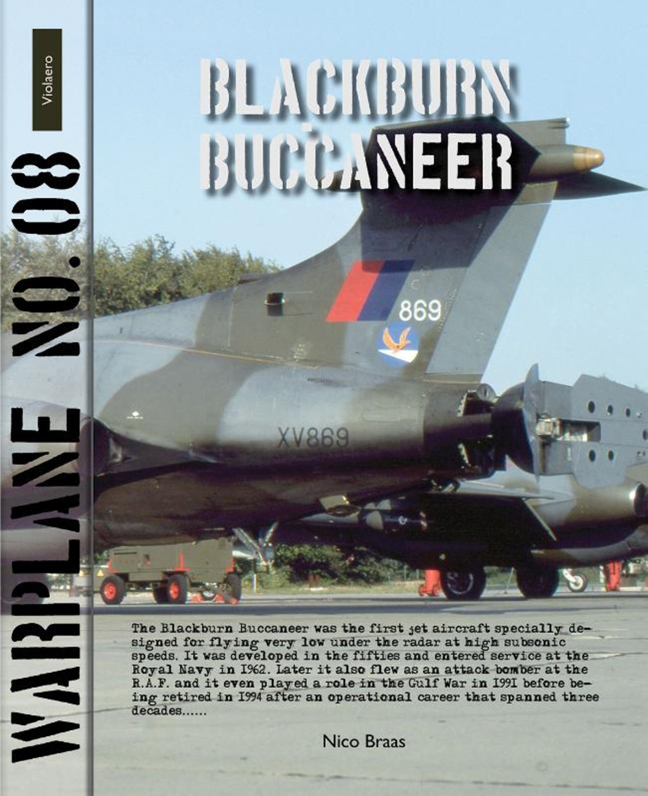Book contents
- Frontmatter
- Introduction
- In service at the royal navy
- Buccaneer Photo-Recce crate
- South African nuclear bombers
- In service at the R.A.F. … at last
- Martel Missile (AJ.168) (AS.37)
- WE177 nuclear bomb
- The Buccaneer goes to war
- Museum piece
- Final phase out and retirement
- Sub-versions S.2:
- Accidents and Incidents
- Survivors
- Technical Description
- References
- Credits
In service at the royal navy
Published online by Cambridge University Press: 20 February 2024
- Frontmatter
- Introduction
- In service at the royal navy
- Buccaneer Photo-Recce crate
- South African nuclear bombers
- In service at the R.A.F. … at last
- Martel Missile (AJ.168) (AS.37)
- WE177 nuclear bomb
- The Buccaneer goes to war
- Museum piece
- Final phase out and retirement
- Sub-versions S.2:
- Accidents and Incidents
- Survivors
- Technical Description
- References
- Credits
Summary
The Buccaneer S.1
Fourteen Buccaneers S.1 from the preproduction were evaluated by No.700Z Sq. at Lossiemouth. XK531 and XK532 were the first to arrive in March 1961 but by the end of this year also XK533-XK535 arrived, soon followed by the all-white painted XK535. They were all extensively test flown. The first operational squadron flying with the Buccaneer was No. 801 at Lossiemouth. They received the first operational production S.1’s in July 1962 and soon embarked on board of the aircraft carrier Ark Royal. Later they were transferred to the aircraft carrier Victorious. No. 809 squadron was the second one equipped with the Buccaneer S.1, based at Lossiemouth. Later it was re-formed into No. 736 squadron acting as an operational training centre for Buccaneer crews. No.800 Sq. was the third and last squadron to be equipped with the Buccaneer S.1. They were stationed on board of the aircraft carrier Eagle and later on the Ark Royal. The total number of Buccaneer S.1 built was 60, including the prototypes and development machines. The last S.1 left the production line in December 1963. Although fully operational, the Buccaneer S.1 had as most important shortcoming that its two De Havilland Gyron Junior engines of 3221 kg thrust each provided not enough power for take off at maximum fuel load from an aircraft carrier. To solve this problem temporary a number of S.1’s was used as a tanker to fuel-up the other Buccaneers in flight shortly after take off. Final solution was a version with more powerful engines; the Buccaneer S.2. Concluding we can say the Buccaneer S.1 never fully met its expectations and it had a relatively short operational career at the Royal Navy when all machines were permanently grounded after two crashes in December 1970. Except for a few machines used as museum piece or gate guard and some S.1’s being converted into S.2 versions, most were soon scrapped.
The Buccaneer S.2
Plans for re-engining the Buccaneer already existed in 1959. As new engine the Rolls Royce Spey was finally selected. It was the same type as used in the De Havilland/B.A.C. Trident airliner. It would fit reasonably well into the Buccaneer airframe without the need for extensive re-designing. The Spey, with designation RB.168-1A was a two-spool bypass engine offering 4990 kg thrust, some 40% more than the Gyron Junior.
- Type
- Chapter
- Information
- Blackburn Buccaneer , pp. 7 - 18Publisher: Amsterdam University PressPrint publication year: 2014

